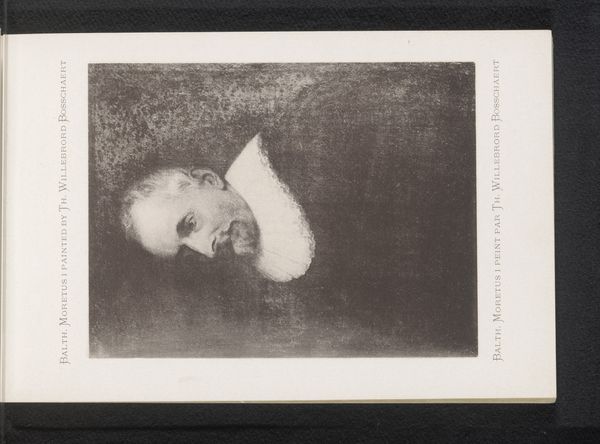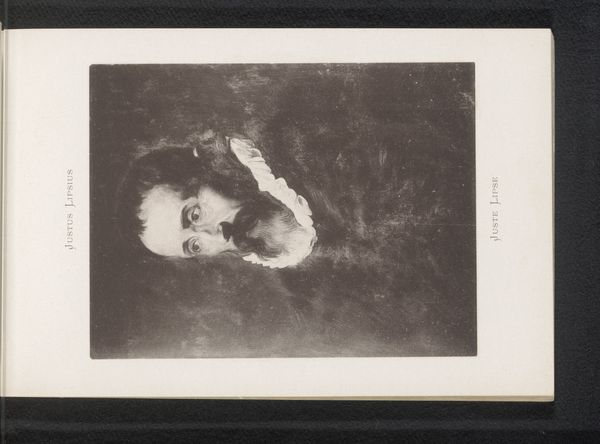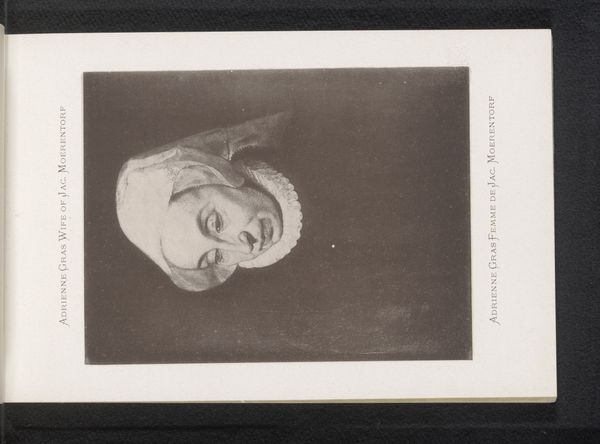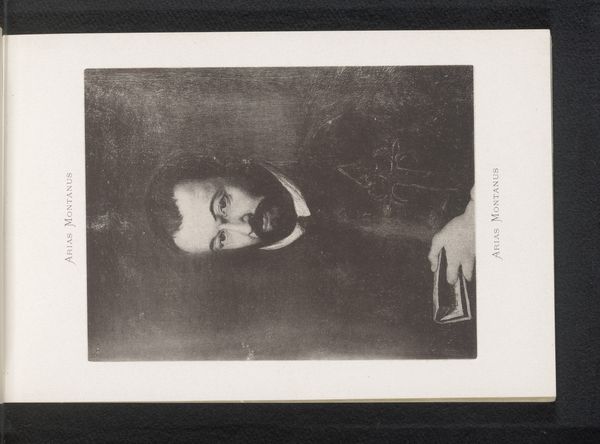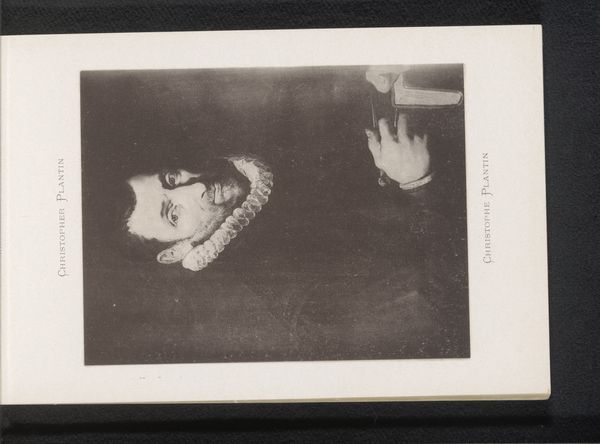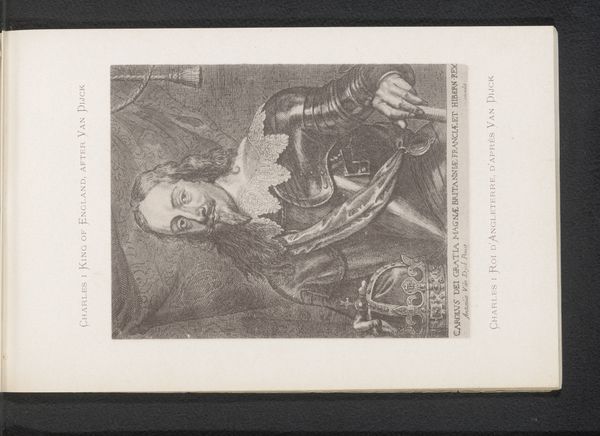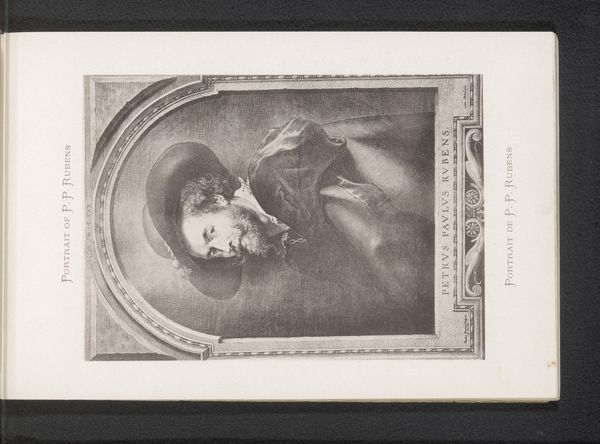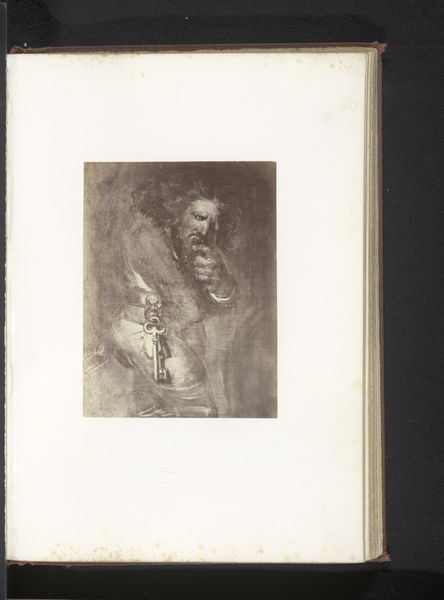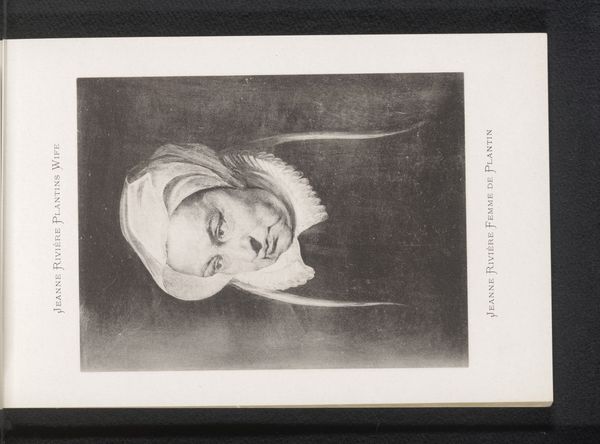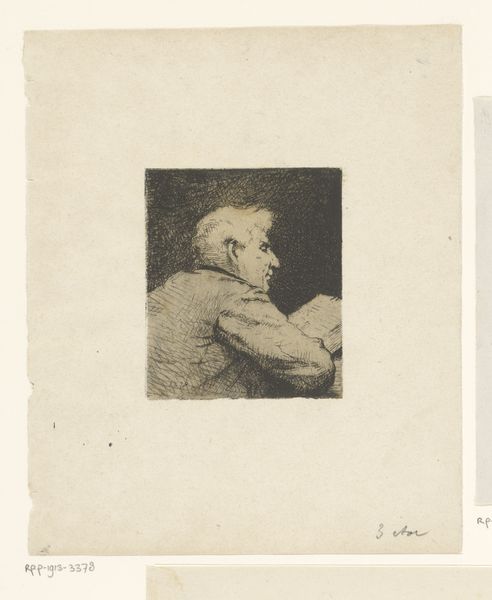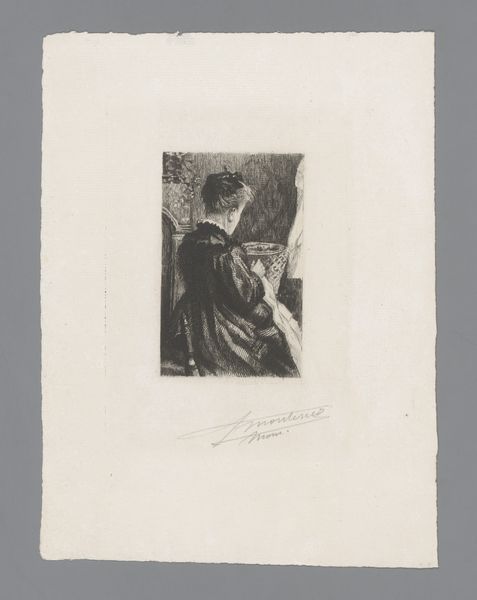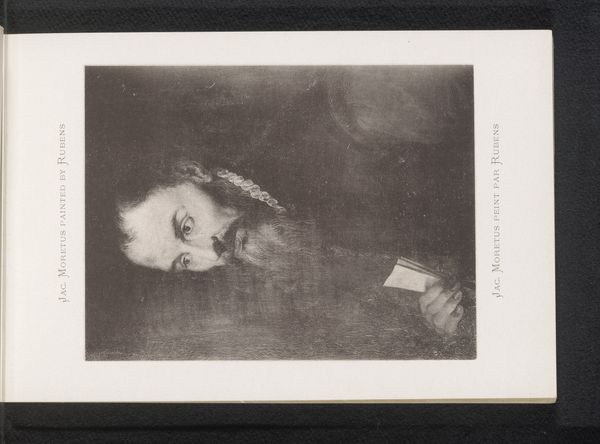
Reproductie van een geschilderd portret van Abraham Ortelius door Peter Paul Rubens before 1897
0:00
0:00
Dimensions: height 164 mm, width 125 mm
Copyright: Rijks Museum: Open Domain
Curator: This is a photographic reproduction of a painted portrait by Peter Paul Rubens depicting Abraham Ortelius, completed before 1897. Editor: It has a somber, contemplative mood. The stark tonal contrast emphasizes the sitter's sharp features against a dark, indeterminate background, creating a very intimate, almost brooding effect. Curator: Precisely. The play of light is very baroque in nature; the luminous skin tones juxtaposed against the very dark clothing give a sense of drama. We are encouraged to follow Rubens's visual rhythms. The crisp details in the ruff draw your eyes immediately to Ortelius’s face, which leads up towards his thoughtfully clasped hands, and back around to the subject’s gaze. Editor: Thinking about Ortelius, it's striking to see the visual language employed here in depicting the prominent cartographer. It reminds us of the immense power that came with charting and mapping the world during the colonial era. This was a powerful mode through which Europeans exerted control and influence globally. Curator: Indeed. And even from just a pure compositional analysis, this use of light and shadow contributes significantly to how we are supposed to perceive this figure, right? To focus the eye where Rubens wants the attention to be is a powerful pictorial device here. The use of tonal and photographic processes heighten it, wouldn't you say? Editor: Of course, the composition guides the eye, but I always consider why, and to what ends? What are the implications of presenting Ortelius—a man instrumental in shaping European understanding of the world—in this particular light, given the social hierarchies present during the colonial period? Curator: Yes, it's fascinating to view Rubens’ Baroque approach with an intersectional awareness. I was deeply compelled by how he seemed to consider structure and beauty above all else, while you want us to consider its contextual power structure. Editor: Precisely. Together we bring new insight into historical contexts. Thank you for sharing.
Comments
No comments
Be the first to comment and join the conversation on the ultimate creative platform.
